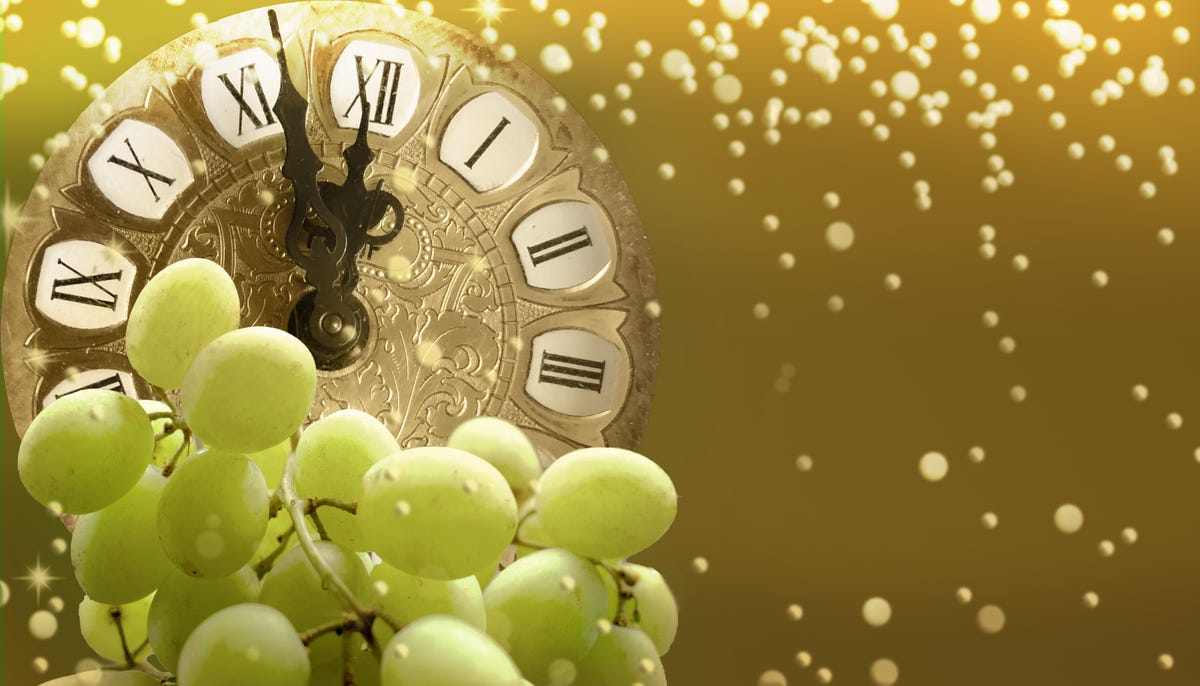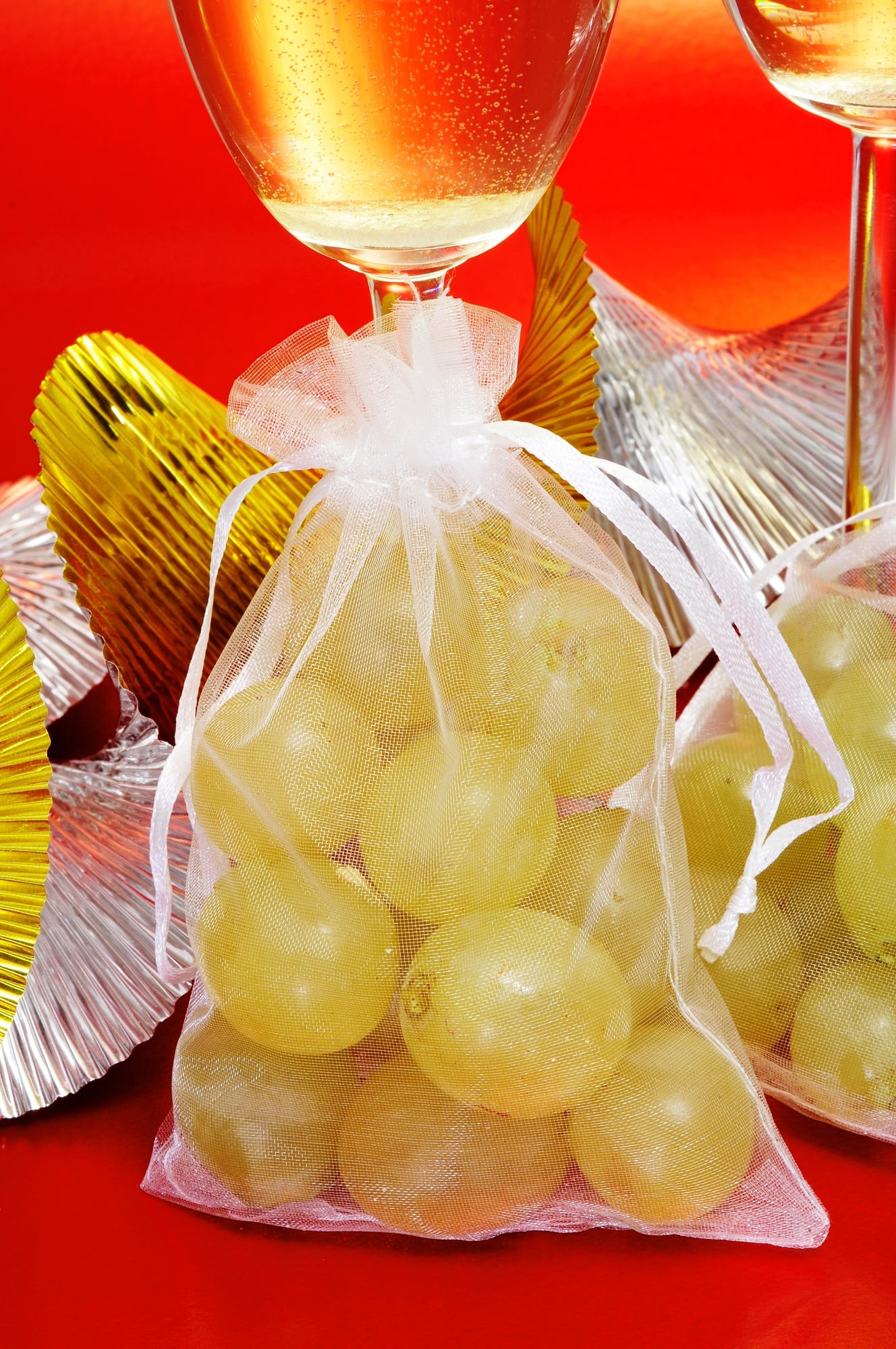
In every corner of the world, the Christmas holidays are a time of tradition and rituals. When the year comes to an end and a new one begins, there are many wants and desires that are kept in mind as January 1 approaches. We have created and protected our traditions as a result of this collective sentiment, and we follow them religiously every year.
On New Year’s Eve in Spain, we have the famous tradition of eating twelve grapes to the rhythm of the twelve bells that signal midnight on December 31st. Every year, all Spaniards do it reflexively, but where do the grapes on New Year’s Eve come from? We’ll explain why grapes are eaten on New Year’s Eve, what type of grape is eaten, how long the practice has been around, what happens if you don’t eat the grapes on New Year’s Eve, and some of the most common rituals surrounding this Christmas tradition in this article.
12 Grapes: An Unusual New Year’s Tradition

If you’re wondering when grapes were first served on New Year’s Eve, the practice began in 1882, when the bourgeoisie boasted of eating grapes with champagne on New Year’s Eve. At the time, it was a luxury that not everyone could afford. One theory claims that from that point forward, people began to gather in the city’s principal squares to eat grapes while listening to the chimes at midnight.
However, another hypothesis regarding the origin of the grapes on New Year’s Eve contends that there was a plentiful grape harvest in Alicante in 1909, and the farmers intended to give a way out by pushing the tradition of the twelve grapes on New Year’s Eve, forcing all produce to be sold. The success was such that few families now do not gather at home or in city squares on New Year’s Eve to eat the twelve grapes.
What Happens If You don’t Drink The Grapes on New Year’s Eve
It may surprise you to learn that the custom of eating twelve grapes on New Year’s Eve was created by fruit producers out of pure financial need. However, it is a myth that has been so ingrained in our culture that questions concerning tradition are common. We discuss topics such as what happens if you don’t eat the grapes on New Year’s Eve, how many wishes are made with the grapes, where the grapes are eaten, when they are eaten, and if not eating the grapes on New Year’s Eve brings bad luck.
And it was the fruit traders who popularized the ritual as “twelve grapes of good luck,” which was a huge hit with the locals. When the clock strikes 12 at night, twelve grapes are taken to welcome the new year, making twelve wishes and good omens with each stroke.
Furthermore, on New Year’s Eve, the twelve grapes are traditionally consumed in the company of loved ones, either in the main squares or within homes. It is also customary for people to establish resolutions for the coming year.
Why do People Eat Grapes Under The Table
The tradition of eating 12 grapes on New Year’s Eve has spread throughout the world, and many countries have adopted it. On New Year’s Eve, each country has its own version of the twelve grapes; for example, in Mexico, the grapes are eaten under the table right at midnight on December 31st.
This custom is not followed by everyone because it is believed that doing so will attract love and couples, so only those looking for a boyfriend or girlfriend in the coming year should participate. Furthermore, according to the original tradition, each grape can be used to make a wish, for a total of twelve wishes to begin the year.
Other New Year’s Eve traditions include wearing a specific color underwear to attract good health (red in Spain, yellow in Mexico or Chile), sweeping the entrance of the house to ward off bad luck, filling your purse or wallet with lentils to have plenty of money, or going out that night on New Year’s Eve and walking around the block with a suitcase to travel a lot in the coming year.
Different countries have figured out how to adapt and imbue this custom with their own culture, which is why new rituals emerge every day that become part of the collective imagination and lend a distinct and special touch to the myth of the twelve grapes on New Year’s Eve and Christmas.
What Grapes are Eaten on New Year’s Eve

Fresh green grapes, with or without seeds, are the traditional way to eat them. Because it is such a deeply rooted Christmas tradition, many fruit vendors sell seedless grapes on New Year’s Eve to facilitate consumption, or they have even sold cans with twelve grapes already peeled and without seeds on New Year’s Eve, so all you have to do is open it at 31 at night. and eat the twelve grapes to the sound of the chimes. On New Year’s Eve, this is a fantastic alternative for children to consume grapes.
There are two reasons why you eat twelve grapes on New Year’s Eve. On the one hand, it’s the number of chimes that signal the conclusion of December 31 and the start of the new year. But it also has to do with the twelve months of the year and corresponds to a yearly balance, in which each grape represents a month lived and another twelve months to come, all of which are eagerly anticipated.
It should be noted that not all countries celebrate New Year’s Eve with fresh grapes. Raisins are commonly eaten to the music of the chimes in various Latin American nations and Portugal. The main reason for this custom is that Christmas does not fall during the peak season for this fruit in these countries.






